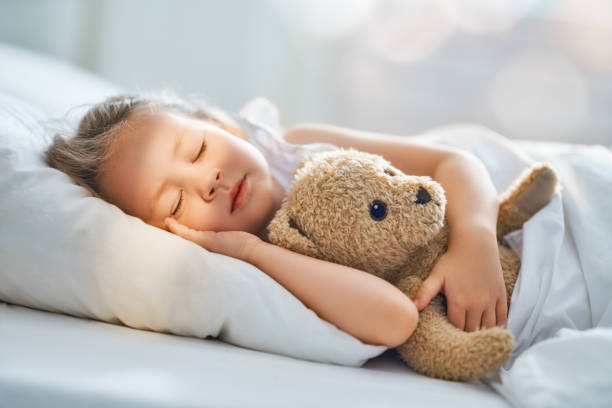Childhood Sleep Problems
Your child’s need for sleep decreases…
Children between the ages of two and three need between 9 and 13 hours of sleep per night. It is important that you adapt to your child’s rhythm during this period. In this period, when they are already in the period of identity expansion, we do not want children to have difficulties because of insomnia. Most children sleep once at noon, but some may prefer a daytime nap in the early hours and a short nap in the afternoon. Some children are able to stop daytime naps altogether; however, if possible, it will be positive for both his development and peace of mind that he sleeps once during the day by adjusting his order. It is good for your child to let him sleep as much as he needs to be rested and fit. Therefore, if you have started your child in a kindergarten or nursery, you can be selective about meeting their sleep needs, especially before the age of three.
childhood sleep problems
Now let’s talk about sleep problems. We leave you with the article titled “Childhood sleep problems” by Mutlu Panda Montessori Kindergarten Psychologist, Expert Psychologist Seniha Naşit Gürçağ. We wish you pleasant reading.
It is very important for children in the developmental age to get quality and adequate sleep for their physical and psychological health. Sleep problems are an important factor that can hinder children’s social and emotional development and school success. While sleep is so important for the development of children, unfortunately, studies reveal that sleep problems are one of the most common problems in childhood. Some of the sleep problems frequently encountered in childhood;
Difficulty falling asleep:
It occurs when the child cannot calm down enough to fall asleep. For children to sleep, it is important that the person accompanying them can support the calming of the child’s nervous system. Inability to fall asleep is common in children who are overly anxious. It can occur especially after trauma and grief situations. In such cases, it is important for parents to remain calm and establish routines that are relaxing and make it easier to fall asleep.
Sleeping late:
It is a condition in which the sleep time is delayed until midnight or even after it. Since the child cannot get enough sleep, it is difficult to wake up in the mornings, sleep time lingering in the afternoon on weekends, fatigue during the day, frequent napping, etc. are the most common symptoms. Parents need to establish a consistent sleep schedule for their child and implement it consistently on weekends.
Having nightmares:
Nightmares are usually fearful dreams that occur in the second stage of sleep. Children may wake up crying or startled. In this case, go to your child as soon as possible. Make him feel safe. Encourage him to tell about his dream.
Night terrors:
It develops suddenly as a result of fears and emotional outbursts during deep sleep. Your child may wake up in horror with glassy eyes, trembling or panting. First of all, don’t be alarmed! Unlike nightmares, children are not fully awake in night terrors. Therefore, your child may not recognize you. Do not try to wake him. Make sure your child is not hurting himself. After a while, he will relax and continue to sleep.
Families are often late to take a decisive step, believing that a healthy sleep habit will develop spontaneously over time. However, it is one of the important habits that parents should give their children by giving support, such as sleeping patterns, eating or toilet training.
Tips for a regular sleep
Set a bedtime and make sure your child is in bed at the same time every night. Make sure that this clock does not slip more than 1-2 hours on weekends.
Reduce the amount of light and sound in the environment before bedtime.
Half an hour before sleep, computer games, TV, etc. Turn off activities and do activities that will make it easier for your child to fall asleep. For example, turn on some calming music, read to him or get him into the habit of reading.
Getting your child into the habit of sleeping in their own room
